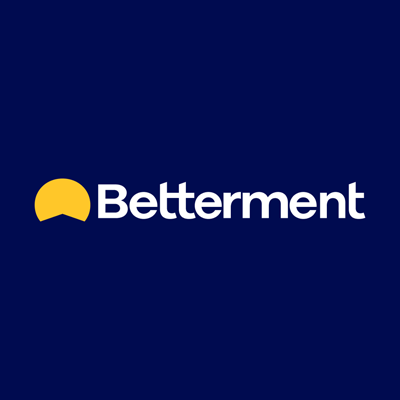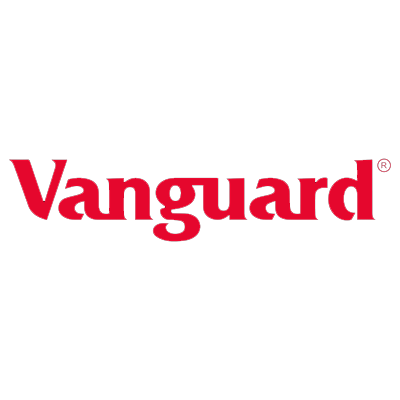


The Best Robo Advisors Of 2024
Explore our comprehensive review of the best robo-advisors for investing, featuring top platforms that provide automated investment management, personalized portfolios, and competitive fee structures.
Table Of Contents
In the world of investing, robo-advisors have emerged as a popular and accessible option, combining technology and expert financial guidance to simplify the investment process. In this article, we delve into the realm of robo-advisors, highlighting the best platforms that offer a seamless investing experience with automated portfolio management, personalized investment strategies, and competitive fee structures.
Whether you’re a seasoned investor or just starting your journey, join us as we explore the top robo-advisors that can help you achieve your financial goals with ease and confidence.
| Robo Advisor | Rating | Best For… | Account Types | Investment Strategies | Minimum Investment Requirements | Fees |
|---|---|---|---|---|---|---|
| Acorns | 3.5 | Investing spare change | Taxable investment account, IRA, UTMA/UGMA | Diversified, low-cost ETFs | $5 | $1 to $5 per month |
| Betterment | 4.8 | Socially responsible investing portfolios | Traditional IRA, Roth IRA, SEP IRA, taxable investment accounts | Diversified, low-cost ETFs | $10 | 0.25% annual management fee |
| M1 Finance | 5 | Overall investing | Individual and joint taxable brokerage accounts, IRAs, custodial trust accounts, SEP IRAs | Diversified, low-cost ETFs | $500 | $125 for premium; free for basic account |
| Empower (Formerly Personal Capital Advisors) | 3.2 | Affluent investors | Brokerage accounts, IRAs | Personal Strategy model | $100,000 | Up to 0.89% portfolio management fee |
| Schwab Intelligent Portfolios | 3.8 | Beginners with $5,000 to start investing | Brokerage accounts, retirement accounts | Diversified, low-cost ETFs | $5,000 | $0 to $30 per month |
| SigFig | 4.3 | Investors that already have a TD Ameritrade, Fidelity Investments, or Charles Schwab account | Taxable individual and joint accounts, traditional IRAs, Roth IRAs, SEP IRAs, 401(k)s, brokerage accounts, custodial accounts | Most portfolios include six to nine low-cost ETFs | $2,000 | 0.25% AUM on balances over $100,000 |
| Vanguard Robo Advisors | 4.5 | Overall investing | Individual taxable account, Roth IRA, traditional IRA, rollover IRA, some eligible 401(k)s | Diversified, low-cost ETFs | $3,000 | 0.15% to 0.30% AUM fee |
| Wealthfront | 4.4 | 529 accounts | Taxable investment accounts, traditional IRA, Roth IRA, SEP IRA, 529 plan | Portfolios are invested in five asset classes: domestic stocks, developed economy international stocks, emerging markets, dividend stocks, and municipal bonds | $500 | 0.25% AUM fee |
Acorns

Show More Details
Acorns’ basic plan allows users to round up purchases to the nearest dollar, investing their spare change into a portfolio of low-cost ETFs. Users can invest with as little as $5 at a time, allowing them to take advantage of dollar-cost averaging.
Acorns asks users for basic information — age, net worth, income, and when you need the funds. Then, they’ll use that information to create a portfolio of stocks they believe will help you reach your investment goals.
That said, Acorns does charge a monthly fee, which some competitors don’t.
Fees:
- $1 per month for just a taxable investment account
- $3 per month for a taxable investment account, retirement account, and checking account
- $5 per month for all of the above plus taxable investment accounts for children
Pros:
- No minimum balance to open an account
- Invests spare change seamlessly
Cons:
- Some competitors offer more at a lower cost
- If your balance is low, the fees likely won’t be worth it
- You’ll need an Acorns checking account to use the roundup feature
Additional Details
Acorns fees aren’t extreme, but they might not be worth it if you have a small balance. For example, if you invest only your spare change and end the year with $100 invested, you would’ve spent $36 on the monthly fees alone. That eats up over a third of your balance.
Unless you need the incentive to save more, opt for a different robo advisor.
Betterment

Show More Details
Betterment offers two options: Betterment Digital (pure robo-advisor) and Betterment Premium (hybrid). Betterment Digital charges an annual management fee of 0.25%, and there is no minimum balance required.
Betterment Premium charges an annual management fee of 0.40%, and you’ll need a balance of at least $100,000. On this plan, you’d get access to unlimited, free consultations with a team of financial advisors.
Their algorithm uses information about you — like your risk tolerance and goals — to create a diversified portfolio of low-cost ETFs. The exact asset allocation of each portfolio will depend on your goals.
Fees:
- 0.25% annual management fee for Betterment Digital
- 0.40% annual management fee for Betterment Premium
Pros:
- Tax-loss harvesting is a standard feature
- No minimum balance requirement (although you’ll need $10 to start investing)
- Offers socially responsible investing (SRI) portfolios
Cons:
- Multiple portfolio options may be overwhelming to new investors
- $299 for a 45-minute financial coaching call is expensive
Additional Details
Betterment Digital customers get an optional, $299 45-minute coaching session with financial professionals for customers who’d like help optimizing their portfolio. Betterment Premium customers get this service for free.
M1 Finance

Show More Details
M1 Finance offers over 80 pre-made investment portfolios, called Expert Pies, which are a collection of stocks and ETFs. Users can choose from a variety of strategies, like general investing, responsible investing, and retirement investing. They can also select the risk tolerance that suits them best, and M1 will handle the rest.
If you’d prefer to craft your portfolio yourself, you can choose from over 6,000 stocks and ETFs to create a custom portfolio.
Fees:
- $0 for basic account
- $125 for M1 Plus
There are no trading commissions or markups on trades.
Pros:
- Rebalances your portfolio to keep your asset allocation in alignment with your goals
- 80+ Expert Pies to choose from
- Low to no fees
Cons:
- No access to human advisors
- $100 minimum balance requirement
- $500 required to open the account
Additional Details
M1 offers two tier options: M1 Basic and M1 Plus. M1 Basic is free, and all trades occur once per day. M1 Plus is $125 per year, and trades occur twice per day.
Empower (Formerly Personal Capital Advisors)

Show More Details
Empower, formerly known as Personal Capital, offers a robo-advising platform and a host of free financial tools. Empower’s portfolios are crafted by a team of strategists and financial professionals. They’re known for their Personal Strategy model, which creates unique investment portfolios for users based on their needs and long-term goals.
The major downside of Empower is that you must have $100,000 or more in investment savings to work with them. They also have high fees of 0.89%, which is much higher than competitors.
Fees:
- 0.89% portfolio management fee for balances between $100,000 and $200,000
- 0.89% portfolio management fee for balances between $200,000 and $1 million (although once you reach this balance, you’ll get access to two financial advisors)
Fees decrease slightly once balances reach $1 million. For example, balances over $10 million will see a 0.49% fee.
Pros:
- Access to free budgeting and portfolio management tools
- Access to human financial planners
Cons:
- Requires a $100,000 minimum
- Higher-than-average management fees
Additional Details
Empower’s fees are steep in comparison to competitors. Unless you have a large investment balance and believe the fees are worth it for the potential financial advising, pick another option.
Schwab Intelligent Portfolios

Show More Details
Charles Schwab is one of the most well-known investment account providers in the game. Their Schwab Intelligent Portfolio option is a fee-free investment management service. The account requires a balance of $5,000 to get started, and you’ll be required to hold at least 10% of your assets in cash at any given time.
The Premium option is $30 per month, plus a one-time $300 planning fee.
Fees:
- $30 for the Premium option
Pros:
- No annual management fee for the basic option
- Diversified portfolios
- 24/7 customer service
Cons:
- A decent portion of your portfolio must be held in cash, which can impact your long-term returns
- $5,000 investment minimum is higher than some competitors
- No socially responsible investment portfolio options
Additional Details
Schwab Intelligent Portfolios is ideal for beginners that are ready to invest and have $5,000 to do it. Its fee-free offer makes it stand out from the crowd. If you don’t have $5,000 to invest, it’s better to look at other robo-advisors with lower minimum balance requirements.
SigFig

Show More Details
SigFig manages investments held in TD Ameritrade, Fidelity Investments, or Charles Schwab accounts. So, rather than being a platform you open an investment account with, you simply link your portfolio to SigFig, and they’ll help you manage it.
You’ll need an investment portfolio with at least $2,000 in it. While you won’t pay a management fee on the first $10,000 managed, you will pay a 0.25% fee on balances over $10,000.
Fees:
- 0.25% AUM on balances over $10,000
Pros:
- Access to human advisors
- Management fee is less than many competitors
- Optional free 15-minute consultation with SigFig advisors before sign up
- Free portfolio analysis tool
Cons:
- Higher minimum balance requirement than some competitors
- No ESG portfolio options
Additional Details
It may seem pointless to connect an account to SigFig when the account provider itself has its own robo-advising feature. However, in some cases, SigFig may be more cost-effective than the provider’s option. It’s best to compare fees, though before making your choice.
Vanguard Robo Advisors

Show More Details
Vanguard offers two robo-advisor options: Vanguard Digital Advisor (a pure robo option) and Personal Advisor Services (a hybrid option). The pure robo option is the standard, hands-off investing, while the hybrid option combines the touch of a human financial advisor.
Vanguard Digital Advisor charges a 0.15% fee and has an account minimum of $3,000. Personal Advisor Services charges a 0.30% fee and has an account minimum of $50,000.
Fees:
- 0.15% fee for Vanguard Digital Advisor
- 0.30% fee for Personal Advisor Services
Pros:
- Lower fees than some competitors
- Simple investing approach
- Retirement planning tools
Cons:
- Higher account minimum than some competitors
- Basic account doesn’t include access to human advisors
Additional Details
While Vanguard’s offering is solid, it doesn’t have ESG or tax-loss harvesting options. If those are a top priority, it’s best to look elsewhere.
Wealthfront

Show More Details
Wealthfront is one of the few robo-advisors to offer a 529 account, designed for saving for a child’s future education. They charge a 0.25% AUM and require $500 to start investing.
Fees:
- 0.25% of assets
- 0.42% to 0.46% fee for 529 college savings accounts
Pros:
- 529 investing accounts
- Low fees
- Recommendations for tax-loss harvesting
- Offers a socially responsible investing portfolio
- Free Path financial planning tool
Cons:
- $500 minimum is higher than some competitors
Additional Details
Wealthfront offers their free Path financial planning tool, which allows you to connect your financial accounts — like your mortgage, credit card, and bank account. Path will look at your financial situation along with your goals and create a plan to save for it.
Frequently Asked Questions (FAQs)
How Does A Robo-Advisor Work?
After you answer questions about your financial situation and goals, the robo-advisor uses an algorithm to create an investment portfolio for you. It continues to manage the portfolio, rebalancing as needed to align with your goals.
What Are The Benefits Of Using A Robo-Advisor?
Robo-advisors offer easy, hands-off investing. They’re great for beginners or those who want to automate their investments. They also typically charge lower fees than human financial advisors.
Is My Money Safe With A Robo-Advisor?
Robo-advisors are typically registered investment advisors, meaning they must follow rules set by regulators. Investments are often covered by SIPC insurance up to $500,000.
What Can I Invest In With A Robo-Advisor?
Robo-advisors typically invest in a diversified portfolio of stocks and bonds by purchasing exchange-traded funds (ETFs).
Do I Need A Lot Of Money To Invest With A Robo-Advisor?
It depends on the platform. Some robo-advisors have no minimum balance requirement, while others may require a few thousand dollars to start.
How Much Does A Robo-Advisor Cost?
Fees vary but are usually a percentage of your assets under management. Expect to pay between 0.25% and 0.50% per year, although some charge less or more.
Can A Robo-Advisor Handle My Retirement Savings?
Yes, many robo-advisors offer Individual Retirement Accounts (IRAs) and can manage your retirement savings.
Can I Withdraw My Money Whenever I Want From A Robo-Advisor?
Yes, you can usually withdraw funds at any time, but keep in mind any potential tax consequences or fees depending on the account type.







